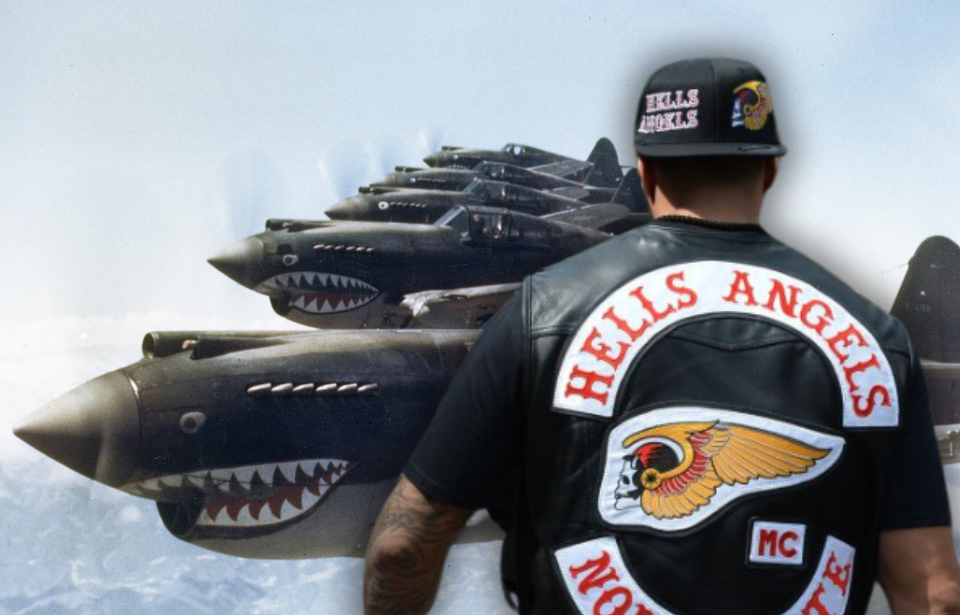The Hells Angels are among the most well-known motorcycle clubs in the world. While the gang is listed as a criminal syndicate in the United States and aboard, they’re also known for their fundraising. What many may not realize is their name derives from the military. This is the story of their origins and how they wound up with their famous moniker.
Origins of the Hells Angels
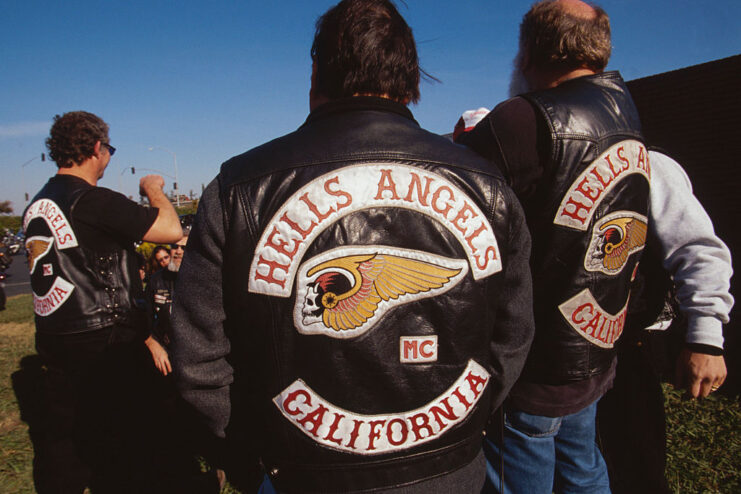
The Hells Angels were founded in March 1948, when a group of motorcycle clubs in Fontana, California, agreed to come together. Since then, the motorcycle gang has grown to include 467 chapters across 59 countries. Its founder was Otto Friedli, a World War II veteran who’d split from the Pissed Off B******* club.
The process of getting accepted into the Hells Angels is a long one that includes multiple steps. In terms of basic requirements, they are the possession of a driver’s license, “the right combination of personal qualities” and a motorcycle with at least a 750cc engine. Even if they pass all the tests, a prospective member can be refused if not everyone votes them in.
That being said, once someone does join the Hells Angels, they’re expected to remain a member for the rest of their lives.
Depictions in modern media
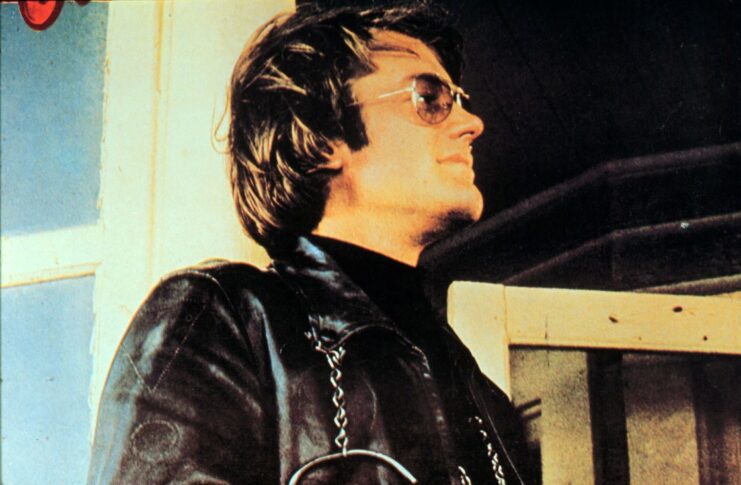
At first, the Hells Angels were viewed almost romantically; people saw the motorcycle club as representing freedom, loyalty and brotherhood. However, the public soon learned more about the gang through two notable sources: Hunter S. Thompson‘s Hell’s Angels: A Strange and Terrible Saga of the Outlaw Motorcycle Gangs and the 1966 film, The Wild Angels.
Thompson had embedded himself in the gang and spent a year with them. However, they eventually turned on the journalist and badly beat him. While The Wild Angels, starring Peter Fonda and Nancy Sinatra, centered around a fictional biker gang, it wasn’t kind to the Hells Angels, showing them to be lawless and nihilistic.
Myth-making of the Hells Angels
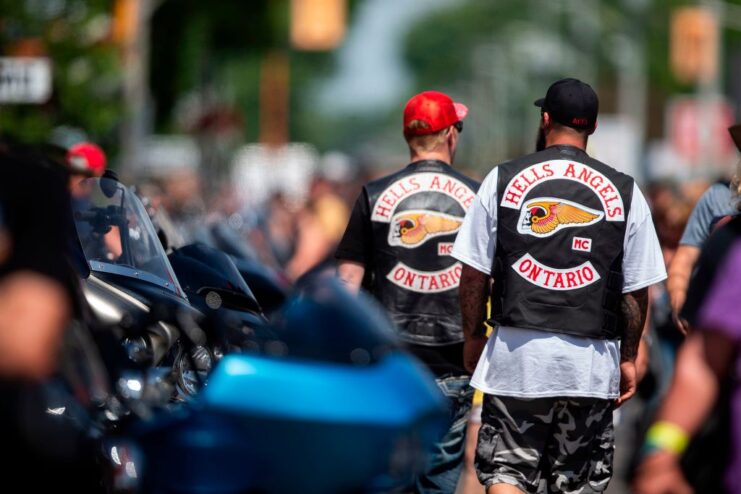
The Hells Angels have long portrayed themselves as an organization that gives back and does good. The motorcycle club regularly participates in charitable endeavors, especially those involving children. Many chapters hold a holiday toy drive, while others are known to support non-profits that fight back against animal cruelty.
At the same time, the Hells Angels have also been connected to criminality. Both the US Department of Justice and Europol (the European Union Agency for Law Enforcement Cooperation) consider the gang an organized crime syndicate. In 2019, a court in the Netherlands issued an edict banning them from the country. In Germany, certain chapters have also been barred, but not the entire motorcycle club.
Even the origins of the name – Hells Angels – is disputed.
Boeing B-17F Flying Fortress Hell’s Angels
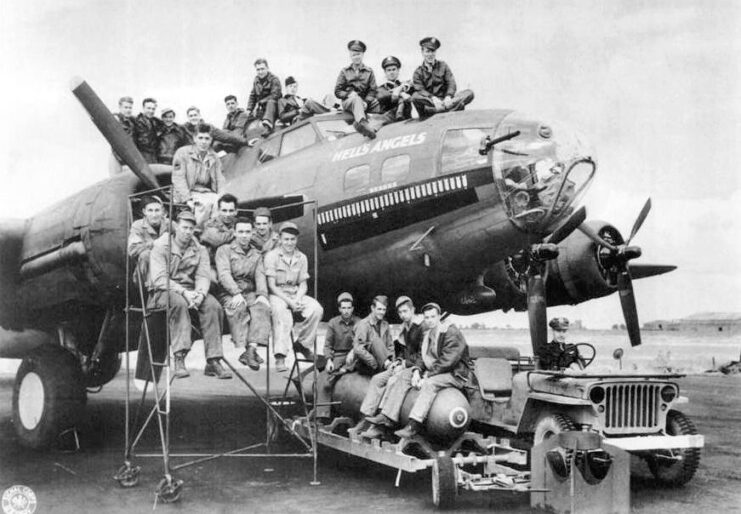
The 258th Bomb Squadron, 303rd Bombardment Group (H), Eighth Air Force was one of the most successful bomber squadrons of World War II. Activated in 1942, its airmen named their Boeing B-17F Flying Fortress Hell’s Angels, after the 1930 movie.
The bomber was among the first in the Eighth Air Force to be credited with 25 combat missions over Europe, with the first taking place in November 1942. It served in the European Theater until 1944, after which it toured the United States. Despite its storied service, it was ultimately sold for scrap in 1945.
Hell’s Angels wound up completing 48 missions during its wartime service. Several accolades were also presented to the 303rd. Two airmen, one of them Jack Mathis, received the Medal of Honor, while four others were given the Navy Cross.
While many believe the motorcycle club was named for the famed B-17F, its name actually came from another group of aviators.
3rd Squadron, First American Volunteer Group (AVG)
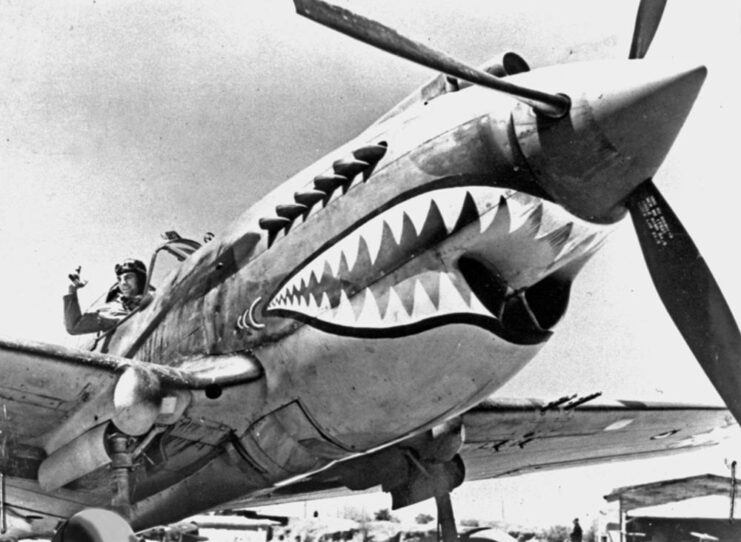
The Hells Angels were named after the First American Volunteer Group (AVG). Nicknamed the “Flying Tigers,” they were a volunteer group that served with the Republic of China Air Force, flying aircraft and aiding in their maintenance.
Many of the pilots participated in World War II, fighting against the Imperial Japanese Army Air Service (IJAAS). The group was actually established to fight back against the Japanese invasion of China, and their Curtiss P-40 Warhawks were recognizable for the fierce faces painted on their noses.
The Flying Tigers’ 3rd Pursuit Squadron referred to themselves as the “Hell’s Angels.” Throughout the conflict, they, along with two other squadrons, were tasked with protecting the Burma Road. In July 1942, the AVG was integrated into the 23rd Fighter Group, which had been newly formed.
More from us: The A-10 Warthog Was Built to Last – And These Facts Prove It
Arvid Olson was part of the Flying Tigers. He was also friends with the founders of the Hells Angels and helped give them their name. The former pilot, however, never made an attempt to join the motorcycle club.
